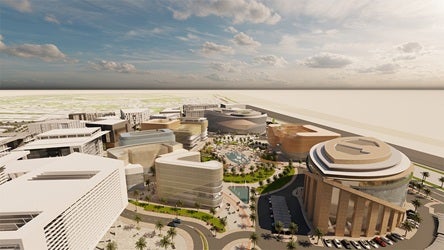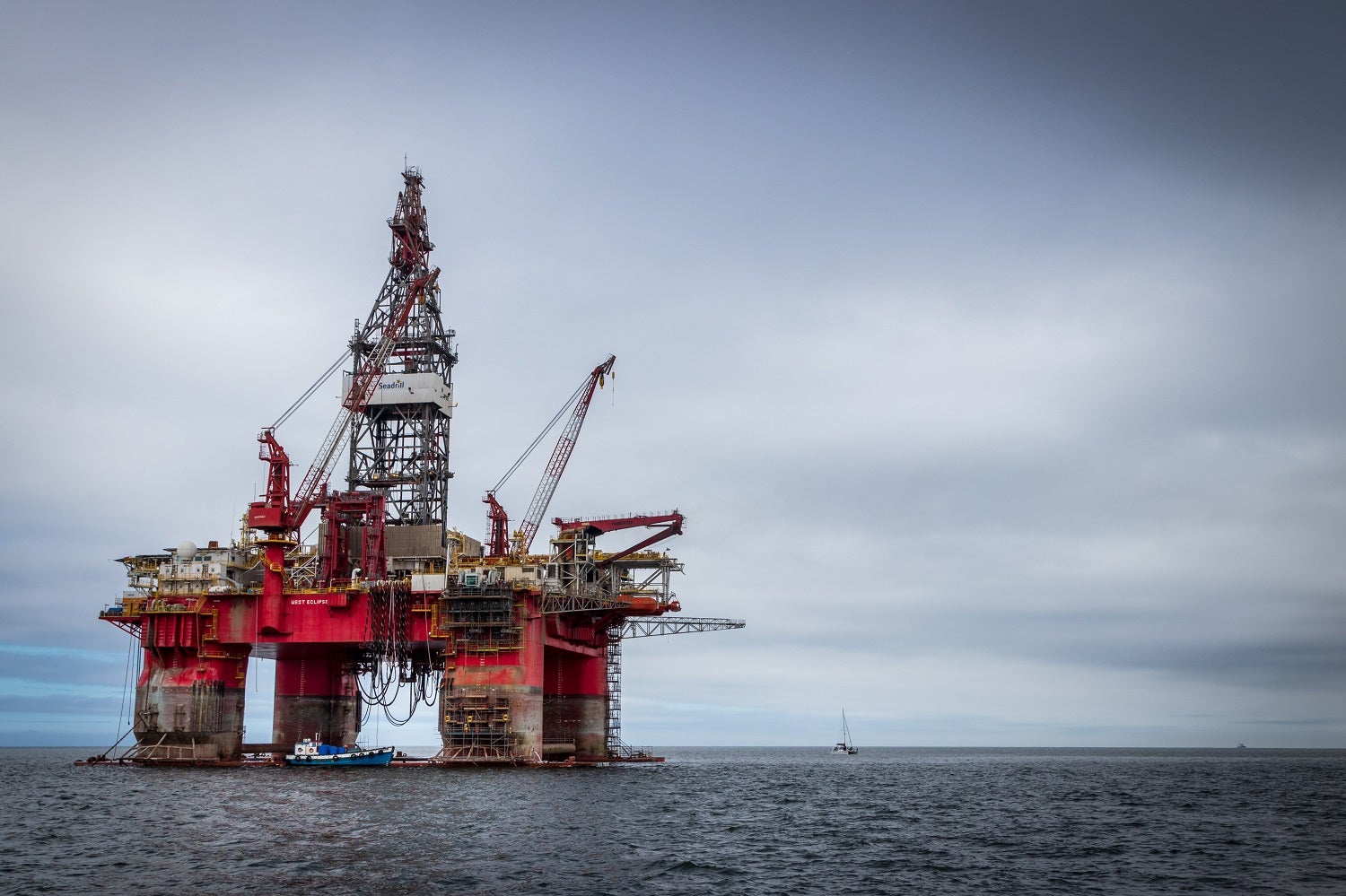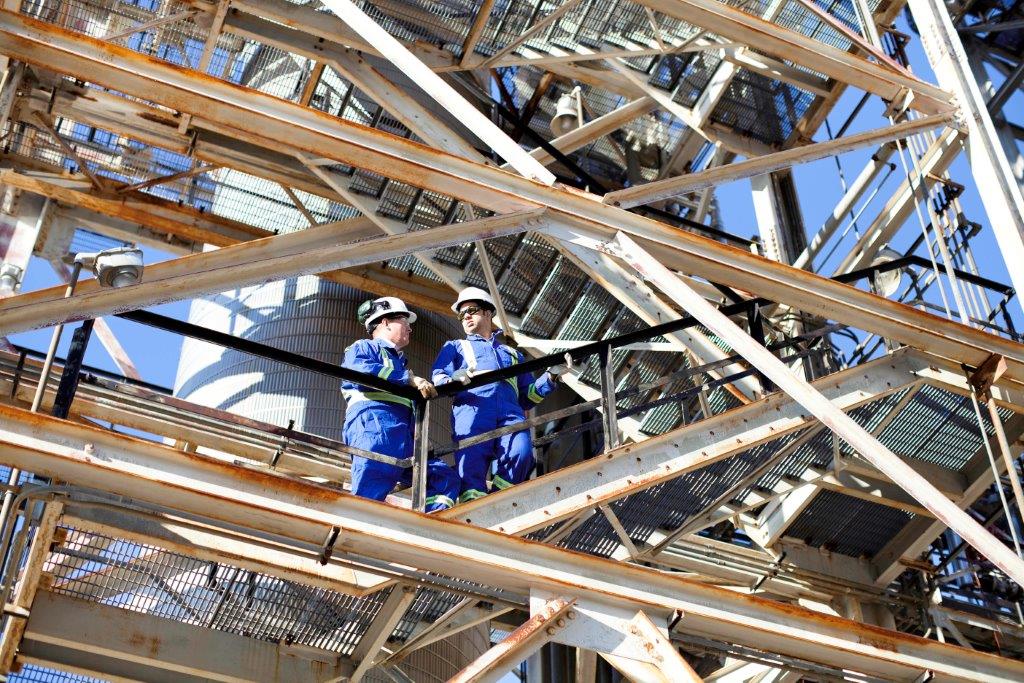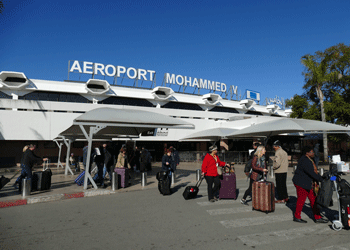SPPC sets June deadline for 3.7GW schemes
15 February 2024
Prequalified developers have four months to prepare proposals for the contracts to develop and operate four solar photovoltaic (PV) projects in Saudi Arabia with a total combined capacity of 3,700MW.
It is understood that Saudi Power Procurement Company (SPPC) expects to receive bids by 10 June for the contracts to develop four solar PV independent power producer (IPP) projects that are being tendered under the fifth procurement round of the kingdom's National Renewable Energy Programme (NREP).
The following solar PV IPP projects and their capacities make up round five of the NREP:
- Al Sadawi solar IPP (Eastern Province): 2,000MW
- Al Mas solar IPP (Hail): 1,000MW
- Al Hinakiyah 2 solar IPP (Medina): 400MW
- Rabigh 2 solar IPP (Mecca): 300MW
SPPC recently announced a list of 23 prequalified companies that can bid for the contracts.
According to SPPC, the following companies have been prequalified as managing and technical members of any potential consortium that may bid for the contracts:
- Abu Dhabi Future Energy (Masdar, UAE)
- Aljomaih Energy & Water (Jenwa, local)
- Alfanar Company (local)
- B Grimm Public Power Company (Thailand)
- BGL Renewable Energy Systems Installation (UAE)
- EDF Renewables (France)
- FAS Energy (local)
- Itochu Corporation (Japan)
- Jinko Power (Hong Kong)
- Kahrabel (UAE/France)
- Korea Electric Power Corporation (Kepco, South Korea)
- Marubeni Corporation (Japan)
- Nebras Company (Qatar)
- Nesma Renewable Energy (local)
- Samsung C&T (South Korea)
- SPIC Huanghe Hydropower Development (China)
- Sumitomo Corporation (Japan)
- Total Energies Renewables (France)
The following companies have been prequalified to bid as managing partner only:
- GEK Terna (Greece)
- Gulf Energy Development Public Company (Thailand)
- Jera (Japan)
- Power Construction Corporation (China)
- Saudi Electricity Company (local)
Saudi utility developer Acwa Power is not among the prequalified developers for the NREP fifth-round projects.
Partly owned by Saudi sovereign wealth vehicle the Public Investment Fund (PIF), Acwa Power is the PIF's principal partner for the development of 70% of the kingdom's planned renewable energy capacity until 2030.
SPPC, the kingdom's principal buyer, started the procurement process for the NREP fifth-round projects in November. It received statements of qualifications from interested developers for the contracts the same month.
US/India-based Synergy Consulting is providing financial advisory services to SPPC for the NREP fifth-round tender.
The round five solar PV IPPs take the total capacity of publicly tendered renewable energy projects in Saudi Arabia to over 10,300MW. Solar PV IPPs account for 79%, or about 8,100MW, of the total capacity.
Four wind IPPs account for the remaining capacity.
At least three of these publicly tendered renewables schemes are now operational: the 300MW Sakaka solar PV, the 400MW Dumat Al Jandal wind IPP and the Rabigh solar IPP projects.
Round four
SPPC signed a 25-year power-purchase agreement (PPA) with the successful bidders for both the 1,100MW Hinakiyah 1 solar IPP and 400MW Tubarjal solar IPP projects in November. The projects make up round four of the NREP.
SPPC signed a PPA with a team led by France's EDF Renewables for the contract to develop the 1,100MW Hinakiyah solar IPP project. In consortium with Abu Dhabi Future Energy Company (Masdar) and the local company Nesma Renewable Energy, the French firm proposed to develop the project for $cents1.68 a kilowatt-hour.
SPPC also signed a PPA with a consortium led by China's Jinko Power for the contract to develop and maintain the 400MW Tubarjal solar IPP scheme.
The principal buyer is reviewing the five bids received in late October for the three wind IPP projects under round four of the NREP.
SPPC is procuring 30% of the kingdom's target renewable energy installed capacity of 58,700MW through a public tendering process by 2030. The PIF is procuring the rest through the Price Discovery Scheme.
Exclusive from Meed
-
 L&T wins Muscat business park deal
L&T wins Muscat business park deal28 July 2025
-
 Cyprus gas field to be connected to Egypt
Cyprus gas field to be connected to Egypt28 July 2025
-
 Chinese company signs Egypt chemicals deal
Chinese company signs Egypt chemicals deal28 July 2025
-

-
 Broader region upgrades its airports
Broader region upgrades its airports25 July 2025
All of this is only 1% of what MEED.com has to offer
Subscribe now and unlock all the 153,671 articles on MEED.com
- All the latest news, data, and market intelligence across MENA at your fingerprints
- First-hand updates and inside information on projects, clients and competitors that matter to you
- 20 years' archive of information, data, and news for you to access at your convenience
- Strategize to succeed and minimise risks with timely analysis of current and future market trends

Related Articles
-
 L&T wins Muscat business park deal Yasir Iqbal
L&T wins Muscat business park deal Yasir Iqbal28 July 2025

Indian contractor Larsen & Toubro has won a contract to build an office complex at the business park within the Madinat Al-Irfan development in Muscat.
The project involves the development of three eight-storey office buildings surrounding a central park, called the Oasis.
L&T described the contract as “large”, a term it uses to denote values exceeding INR25bn ($289m).
MEED reported in August last year that Oman Tourism Development Company (Omran) had issued a tender for the project on 22 August. It is understood that bids were submitted in September last year.
Omran signed an agreement in April 2024 with Muscat-based Alizz Islamic Bank to establish a financial partnership for the project's development.
UK analytics firm GlobalData expects the Omani construction industry to register an annual average growth of 4.2% in 2025-28, supported by investments as part of the Oman Vision 2040 strategy. Under this strategy, the government plans to allocate RO20bn ($52bn) to the tourism sector and aims to attract 11 million visitors annually by 2040.
In May, the Washington-based IMF said that Oman’s economy is showing steady growth and low inflation despite ongoing oil production cuts.
Real GDP growth strengthened to 1.7% in 2024, up from 1.2% in 2023, driven by robust non-hydrocarbons activity, particularly in manufacturing and services. Growth is projected to accelerate further, reaching 2.4% in 2025 and 3.7% in 2026 as Opec+ production curbs are phased out and investments in logistics, renewables and tourism gain traction.
https://image.digitalinsightresearch.in/uploads/NewsArticle/14350223/main.jpg -
 Cyprus gas field to be connected to Egypt Wil Crisp
Cyprus gas field to be connected to Egypt Wil Crisp28 July 2025
Register for MEED’s 14-day trial access
Cyprus’ Cronos natural gas field is expected to be linked to Egypt’s gas infrastructure by 2027, according to a statement from Egypt’s Ministry of Petroleum & Mineral Resources.
The statement was released after meetings in Cyprus attended by Karim Badawi, Egypt’s minister of petroleum and mineral resources, and George Papanastasiou, Cyprus’ minister of energy, commerce and Industry.
The meetings were also attended by representatives from the Italian oil and gas company Eni and France’s TotalEnergies.
Officials are preparing to make their final investment decision (FID) for the development of the field later this year and link the field to Egyptian infrastructure, processing facilities and machinery by 2027, according to the statement.
Badawi said that Egypt is ready to help complete the project and that providing a new energy corridor in the region would strengthen regional cooperation and benefit both countries.
The ministers also reviewed developments at Cyprus’ Aphrodite field, including the marine surveying of the planned gas pipeline.
The survey is currently under way in the economic waters of both Cyprus and Egypt, and is expected to pave the way for a link from Aphrodite to Egyptian facilities.
https://image.digitalinsightresearch.in/uploads/NewsArticle/14348479/main0942.jpg -
 Chinese company signs Egypt chemicals deal Wil Crisp
Chinese company signs Egypt chemicals deal Wil Crisp28 July 2025
Egypt’s Red Sea Refining & Petrochemical Company (RSNRPC) and China National Chemical Engineering Company (CNCEC) have signed a non-binding framework agreement to develop the Red Sea petrochemical project in the Suez Canal Economic Zone, according to a statement from Egypt’s Ministry of Petroleum & Mineral Resources.
The signing of the agreement for the project, which has previously been estimated to be worth $1.7bn, took place at CNCEC’s headquarters in Beijing.
At the signing ceremony, Ibrahim Abdel Qadir Makki, chairman of the board of directors of the Egyptian Petrochemicals Holding Company (ECM), said the agreement represented a milestone in the development of a “promising” project.
He also said that CNCEC had shown it was prepared to potentially contribute to the project’s capital, alongside its potential support in a financing arrangement, covering up to 85% of the value of the engineering, procurement and construction contract (EPC).
The agreement signing ceremony was also attended by representatives from Chinese financial institutions, including Bank of China, China Export & Import Bank and Sinosure Export Insurance Company.
Makki said that the Red Sea project has competitive advantages due to its strategic location near the Suez Canal, and the availability of production unit licences.
He also said that there was increasing global demand for products such as polyethylene and polypropylene (PP).
Project delays
Prior to the latest deal with CNCEC, the project had been on hold for more than 18 months.
The project has seen several setbacks over recent years.
Previously, the project was set to be developed by Sidpec in Alexandria with a budget of $1.7bn.
In 2020, Sidpec initiated a review of the feasibility and financial structure of the polypropylene facility, given the economic impact of the Covid-19 pandemic.
Bids for the polypropylene plant were submitted on 2 October 2019 and, at the time, the contract was expected to be awarded in April 2020.
There were significant delays to the contract award amid the Covid-19 pandemic, which led to restrictions on movement and a decline in demand for refined products and petrochemicals.
In October 2020, MEED reported that Sidpec had extended the bid bond for its project to develop the polypropylene facility in Alexandria.
The companies that submitted bids for the project were:
- Saipem (Italy)
- Samsung (South Korea)
- HQC (China)
- China National Chemical Engineering Company (China)
- Technip Energies (France)
Bids for the project were submitted after several delays and bid deadline extensions.
Prequalification documents for the project were submitted in April 2019, and the contract for the front-end engineering and design (feed) was awarded to US-based Jacobs.
Sidpec partnered with the Egyptian Ministry of Petroleum & Mineral Resources and Egyptian Petrochemicals Holding Company (Echem) for the project.
The project’s scope originally included the construction of a polypropylene plant with a capacity of 450,000 tonnes a year, as well as an air-separating unit and associated facilities.
https://image.digitalinsightresearch.in/uploads/NewsArticle/14348480/main.jpg -
 September deadline for $1.1bn Riyadh mixed-use project Yasir Iqbal
September deadline for $1.1bn Riyadh mixed-use project Yasir Iqbal28 July 2025

Contractors have been given until 21 September to prepare bids for an estimated SR4.2bn ($1.1bn) contract to build a mixed-use development in the Al-Yasmin district of Riyadh.
The project, named Thee Erth, is being developed by Riyadh-based developer Erth Real Estate.
MEED understands that the tender for the main contract was released in May. The previous submission deadline was 26 July.
The Thee Erth development spans an area of about 60,000 square metres (sq m). It features multiple towers comprising a 230-key Raffles hotel, a 250-key Sofitel serviced residence block and a 60-villa MGallery resort.
The development will also offer office facilities, residential apartments and retail spaces.
UK-based architectural firm Foster & Partners is the project architect.
The client has signed up French hotel operator Accor to manage two hotels at the development.
UK-headquartered analytics firm GlobalData expects the kingdom’s construction industry to record an annual average growth rate of 5.2% in 2025-28, supported by investments in transport, electricity, housing and tourism infrastructure projects and the Saudi gigaprojects programme.
The industry will also be supported by the government’s aim to increase homeownership from 62% in 2020 to 70% by 2030, as part of Saudi Vision 2030.
https://image.digitalinsightresearch.in/uploads/NewsArticle/14349819/main.jpg -
 Broader region upgrades its airports Yasir Iqbal
Broader region upgrades its airports Yasir Iqbal25 July 2025
 This aviation package also includes:
This aviation package also includes:> Middle East invests in giant airports
> Global air travel shifts east

While high-profile projects such as the development of King Salman International airport and the expansion of Al-Maktoum International airport have captured headlines, a quieter but equally significant story is unfolding elsewhere.
Smaller countries across the region are increasingly investing in airport infrastructure, either by modernising existing terminals or constructing entirely new facilities.
Throughout the broader Middle East, governments are dedicating substantial resources to expanding airport capacity in order to meet growing passenger demand, enhance global connectivity and support wider economic reforms.
Oman
 Oman achieved a milestone in 2019 with the opening of Muscat International’s new terminal, which increased the country’s passenger handling capacity to 20 million annually.
Oman achieved a milestone in 2019 with the opening of Muscat International’s new terminal, which increased the country’s passenger handling capacity to 20 million annually.The government is now shifting its focus to regional airports, including the planned Musandam airport – an important component of Oman Vision 2040. This project aims to stimulate economic development in the Musandam region by enhancing logistics and promoting tourism.
In June, Oman’s Civil Aviation Authority invited firms to prequalify for the enabling works contract for Musandam airport. The project attracted strong interest, with more than 50 local and international companies expressing their intent to participate in the construction work.
Beyond physical infrastructure, Oman is also looking to modernise its aviation ecosystem. Plans are under way to expand the air navigation infrastructure and open the sector to private international investment through concessions for the management and operation of airports and related services.
These efforts align with the National Aviation Strategy 2030, unveiled in 2020, which aims to attract $3.6bn in investment for airport cities over two decades.
Kuwait
Kuwait International airport is undergoing a major redevelopment with the construction of Terminal 2, a project led by Turkish contractor Limak. The long-delayed $5.8bn development is now progressing steadily and is expected to be completed by the end of 2026.
Spanning over 700,000 square metres (sq m) and comprising five floors – including one underground level – the new terminal will significantly boost the airport’s capacity. Once the first phase is completed, it will be able to handle 25 million passengers annually, with capacity expected to increase to 50 million in later phases.
The terminal plays a central role in Kuwait’s ambition to become a regional transit hub and is a cornerstone of the country’s broader economic diversification efforts outlined in the New Kuwait 2035 strategy.
Qatar
Qatar marked a significant milestone in its aviation sector in February with the inauguration of Concourses D and E at Hamad International airport (HIA), boosting capacity to over 65 million passengers a year.
With the opening of these two new concourses, the HIA expansion project – launched in 2018 – is now complete. The expanded terminal spans more than 842,000 sq m and includes 17 new aircraft contact gates.
While high-profile projects have made headlines, a quieter but equally significant story is unfolding elsewhere
Bahrain
Bahrain completed a $1.1bn expansion of its international airport in 2021, more than doubling its annual passenger capacity to 14 million. The project included the construction of a new terminal, upgraded baggage handling systems and enhanced passenger services.
While smaller in scale compared to its regional counterparts, Bahrain International airport plays a crucial role in supporting the kingdom’s financial and tourism sectors.
Continued investment in airport infrastructure is anticipated, as Bahrain seeks to remain competitive in a region where aviation standards are rapidly evolving.
In October last year, Bahrain’s Minister of Transportation Mohammed Bin Thamer Al-Kaabi said that the kingdom is considering developing a new terminal at Bahrain International airport. Although discussions are still in the early stages, preliminary plans suggest substantial upgrades – including increased passenger capacity, automated check-in systems, enhanced security features and expanded retail areas.
Iraq
Iraq is gradually rebuilding its aviation sector after years of conflict and instability. In July, it issued a tender for a public-private partnership to rehabilitate, expand, finance, operate and maintain Baghdad International airport in a project valued between $400m and $600m.
The airport’s initial capacity is expected to be around 9 million passengers, with plans to increase to 15 million over time.
According to an official statement, Iraq’s Transport Ministry has prequalified 10 of the 14 international consortiums that expressed interest earlier this year to compete for the tender.
Morocco
Morocco, as part of its MD42bn ($4.3bn) plan to expand key airports ahead of the 2030 Fifa World Cup, has begun procuring contractors to expand its largest airport, Mohammed V International Airport in Casablanca.
In June, 28 local and international firms expressed interest in building the new terminal, which will cover approximately 450,000 sq m and is scheduled for completion before the World Cup, which Morocco will co-host with Portugal and Spain.
Morocco also plans to upgrade airports in Tangier, Marrakech, and Agadir, boosting their capacities to 7 million, 16 million and 7 million passengers annually, respectively. Additionally, a new terminal at Rabat-Sale airport will increase its capacity to 4 million passengers, while Fez airport’s capacity is set to rise to 5 million annually.
Main image: Morocco has started the procurement process to expand its largest airport, Mohammed V International airport in Casablanca, ahead of the 2030 Fifa World Cup
https://image.digitalinsightresearch.in/uploads/NewsArticle/14340399/main.gif



